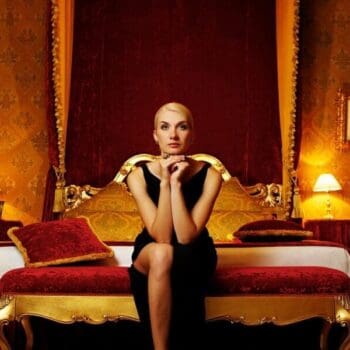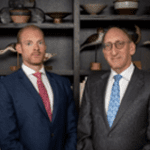 Progressive luxury is a new term that we are promulgating to describe a new evolution within the luxury and upper-upscale segment that will have a profound impact on hotel trends, investment and development for the latter half of the 2020s. Our first eureka moment about this trend came during the 46th annual NYU International Hospitality Industry Investment Conference (IHIIC) held in early June in New York City, and our hypothesis was confirmed after a thorough introduction to the EAST Hotel brand at its Miami location.
Progressive luxury is a new term that we are promulgating to describe a new evolution within the luxury and upper-upscale segment that will have a profound impact on hotel trends, investment and development for the latter half of the 2020s. Our first eureka moment about this trend came during the 46th annual NYU International Hospitality Industry Investment Conference (IHIIC) held in early June in New York City, and our hypothesis was confirmed after a thorough introduction to the EAST Hotel brand at its Miami location.
As its name implies, progressive luxury signifies progress. On the jagged road towards a kinder form of capitalism in the 21st century, we are likewise in the midst of a great evolution for what travelers will come to value from their chosen hotel brand, what emotionally influences their choice of accommodations, and what else they want to spend their money on. The lifestyle and luxury segments traditionally codify and profit from these tenets. But now, from what we see with the explosion of luxury and lifestyle brands, new properties, and developments within these spaces, even these segments deserve further segmentation.
The current state of luxury categorization
To offer some perspective on where we are right now, do you remember when dividing the hotel industry into categories that meant only economy (or budget), midscale, upscale, and luxury? Over the years, as the barbell distribution of hotel categories has fattened both ends of the spectrum, we now have select service, limited service, and (to a lesser extent) extended stay to complement the economy, while on the other end, there’s now upper midscale, upscale and upper upscale (this last classification in the chain scale is seeing big year-over-year according to the latest figures by the way).
Through the ‘Mille Club’, which is Hotel Mogel’s internal term to denote our work with and constant research of hotels charging over $1,000 per night, we haven’t seen an improved taxonomy within the luxury spectrum. The best we’ve seen is the partitioning off of the ultraluxury category to denote super-expensive enclaves of the 20-80 key range. Think brands like Aman, Bulgari, Dorchester Collection, Mandarin Oriental, Oetker Collection, One&Only, Raffles, Ritz-Carlton Reserve, Rocco Forte, Rosewood and Six Senses.
Hardly an exhaustive list, each property in these brands, whether urban or resort, reflects flawless service and personalization but also a wholehearted embrace of the in-vogue term ‘quiet luxury’ where seclusion within an elegant setting that also stewards the surrounding locality is the order of the day. We’ve seen this category bloom over the past decade, and all indications are that this will continue because it represents the epitome of the ‘experience economy’ – hyper-personalization, exclusivity, personal transformation, immaculate attention to detail and elite access to one-of-a-kind activities.
The word ‘lifestyle’ has also entered the recent discussion as a pseudo-luxury modifier, but there’s no firm delineation of how this reflects rate structure and service offerings. It’s used in marketing communications rather liberally by brands that are luxury as well as those that are premium or upscale. Our sense of the word is that it indicates a mindset, not a classification, that is, any hotel in any category that aims to bring together like-minded individuals through a confluence of hotel themes, services, amenities and curated experiences.
In short, lifestyle primarily focuses on creating a congregation point for a particular psychographic or interest group independent of a hotel classification. Instead, we see growth within the luxury segment within an emerging subcategory that we describe using a novel term that we’ve borrowed from music — ‘progressive luxury’.
Defining the progressive luxury category
As its nomenclature implies, progressive is supposed to mean ‘making progress’. Hence, progressive luxury represents a new category where the main draw is, like lifestyle, a sense of community for alternative thinkers, wellness-focused travelers, and people who have reoriented their habits around modern high-performance living, all completed with the hallmarks of luxury hotel service. These are properties that are citizens and stewards of their localities.
To give you a baseline for travel demand, here are the secular changes in consumer behavior that progressive luxury is aiming to serve:
- Knowledge workers are supplanting the traditional middle class, where upwardly mobile individuals are rewarded more for creativity, collaboration, tech fluency, and financial acumen.
- Popularity and acceptance of remote work and glocalization whereby people feel a more personal connection to like-minded individuals rather than merely by geographic convenience.
- A longevity focus where ‘health is wealth’ and people more heavily prioritize work-life balance, quality sleep, food as medicine, stress reduction, and wellness-based discretionary spending.
- On the heels of longevity, society is becoming more ageless with a dissolution of clearcut retirement at 65 and more second careers, emeritus positions, and ‘elderpreneurship.’
- Respect and sensitivity for sustainability, eco-consciousness, and living a more ‘natural’ lifestyle
- Valuing thoughtful experiences, often inwardly focused, over the showier, outward materialistic purchases and conspicuous consumption of past eras, as inscribed by previously mentioned terms such as ‘quiet luxury’ and ‘the experience economy.’
- Branded residences are another vehicle for extended-stay travel. Guests have convenient access to amenities and services, allowing them to maintain their standards of living.
- More multigenerational travel, reorienting area planning around fewer rooms with a higher average square footage.
The prioritization of wellness and well-being is a hallmark of this new categorization and the guests it serves. Whereas wellness in traditional luxury brands may be centered around the spa and gym – think brands like Conrad, Four Seasons, Kempinski, Langham, Montage, Park Hyatt, Ritz-Carlton, Shangri-La, Sofitel, St. Regis, Peninsula and Waldorf Astoria – progressive luxury has placed healthy living, creativity and networking with other HENRYs (high earner not rich yet) in a sophisticated setting at the core of the brand’s differentiation.
Of a key range that can be in the 100-300 range, this wellness-oriented lifestyle of a progressive luxury brand transcends the guest suite and pervades every guest-facing operation. To give you a sense of some brands we see evolving in this space, consider ones (however emerging or nascent they may be) like 1 Hotels, Andaz, Appellation, Capella, EAST Hotels, EDITION, Equinox Hotels, Fasano, Janu, Nobu Hotels, Pendry, SIRO, SLS, Soho House and Viceroy.
Concurrently, to see this evolution in action, you may also look at other niches with a wellness focus like the ‘luxury health clinics’ of Canyon Ranch or Lanserhof, as well as the ‘hip’ upper upscale brands such as W Hotels, Hard Rock’s Reverb, NYX Hotels or Virgin Hotels. Yes, we’ve thrown a lot of names at the wall. Still, the point herein is that there’s a new category emerging that’s more poignantly targeting health-conscious, wellness-on-the-go, eco-conscious, community-seeking, experience-motivated travelers who also happen to be trendy HENRYs or captains of industry. We’ve labeled this as ‘progressive luxury,’ but we’re open to other nomenclature suggestions!
Lifestyle total revenues
What this conference clarified for us was that the luxury segment is more fluid than previously imagined. From all the brand names rifled off above, it should already be evident that there is no longer just one type of luxury customer and that the traditional methodology of segmentation by age and income doesn’t work in today’s lifestyle-driven economy.
The real secret sauce of progressive luxury and all other luxury subcategories now lies in mixed-use real estate or profit center diversification—what’s often termed total revenues on a proforma or the income statement. The principle here is that the hotel room night is often only the first source of revenue from a guest who will ultimately spend 50% to 200% more than their room reservation on ancillaries (dining, spa, activities, excursions, events, gift shop, and so on).
Many of these secondary, non-room revenue sources are harder to forecast accurately during the initial feasibility or development stages. Still, they can be lucrative profit centers and instrumental vehicles for long-term loyalty. This is what we colloquially label as a hotel’s ‘reason to visit’, and it is often pushed through by the passion and sheer will of ownership that sees the intangible benefits beyond the numbers alone may tell.
For instance, can you build a luxury hotel nowadays without a strong wellness program? These spas and guestroom FF&E to realize said programming have a huge capex, and yet they are entirely necessary to attract the type of guests you need to sustain your rates. To give you another sense of the relationship between this diversification of luxury identities and the total revenues from across the entire guest journey, consider the emergence of branded e-commerce like the Mandarin Oriental Shop, Aman Essentials, Emporio Fasano in Brazil or, more granularly, Rosewood Asaya’s clothing partnership with Sporty & Rich.
It may be a lot to take in all these developments, but what’s critical is to consider that mixed-use revenues mean those captured inside the four walls (rooms, dining, spa, parking, etc.) and those beyond (e-commerce, activities, additional services). It’s truly a new frontier with luxury representing the hospitality vertical at the forefront of immense change, with hotels developing new products and services to serve this ageless, 21st-century guest mindset.
This article may not be reproduced without the expressed permission of the authors.
















